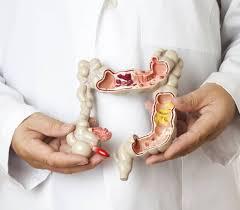
Many children with constipation may have an easier time going to the bathroom when potty training is paired with exercises to improve posture and strengthen pelvic muscles, a recent study suggests.
Researchers focused on 53 school-age kids with what’s known as functional constipation, a common childhood problem that can be caused by psychological or neurological issues. This type of constipation isn’t due to physical or hormonal issues that make bowel movements difficult.
All of the kids received standard care for constipation, which included toilet training, education and laxatives. A subset of 27 children chosen at random also got physical therapy.
After six months, 92 percent of the participants in the physical therapy group no longer had functional constipation, compared with 63 percent of the kids who didn’t get physical therapy, researchers report in Gastroenterology.
“While most people associate ‘muscles’ with ‘strength’, they do more than assist in lifting heavy objects,” said lead study author Marieke van Engelenburg – van Lonkhuyzen, a researcher at Maastricht University in the Netherlands.
Children with functional constipation may have weak pelvic floor muscles from poor posture or sitting in an awkward, unstable position on an adult-size toilet seat, she said by email.
The pelvic floor muscles work closely with the diaphragm, lower back muscles and abdominal muscles to support the spine and stabilize the digestive system. When the pelvic muscles don’t work optimally, kids can struggle to control bowel movements.
“Effective, voluntary and involuntary, contraction and relaxation must be present when passing urine or feces on the toilet, to avoid dysfunctional voiding or constipation,” she added.
To assess the potential for exercise to ease constipation by improving posture and pelvic muscle strength, researchers offered physical therapy to half of the kids aged 5 to 16 years who participated in the study.
At the start of the experiment, 42 percent of the kids had bowel movements less than three times a week and more than half of had stools that were unusually hard, large or painful. All but one of them had been prescribed laxatives.
Standard care for all of the kids included counseling with children and their parents to address any myths or fears about going to the bathroom, advice on the need for fluids and a fiber-rich diet, and instructions on the best timing and habits for attempting to use the toilet.
In addition, kids assigned to physical therapy practiced proper posture on the toilet and did exercises to teach awareness of sensations that indicate a need to defecate and effective muscle contracting and relaxing for easier bowel movements.
One limitation of the study is that many parents didn’t consent to have researchers do rectal exams to test the strength of children’s pelvic floor muscles before and after treatment, the authors note. As a result, researchers didn’t have enough data to determine how exercises may have influenced muscle function.
Some children may be able to resolve constipation with standard therapy, as happened with a subset of kids in the study, noted Jennifer Verrill Schurman, a researcher at University of Missouri - Kansas City School of Medicine who wasn’t involved in the study.
“However, if constipation has persisted for a period of time, if the child has shown behavioral signs of withholding stool or routinely postponing defecation, or if a child seems unable to have a bowel movement even when they are sitting on the toilet and appear to be trying, these are indications that moving forward with at least an evaluation for pelvic floor physical therapy as part of initial treatment may be warranted,” Verrill Schurman said by email.
“Most of the kids in the current trial had issues with functional constipation for longer than 6 months, and many evidenced at least some of these behavioral associations, which may help to explain why physiotherapy enhanced standard treatment to the degree observed,” she added.
Source: Reuters
 FR
FR EN
EN AR
AR








